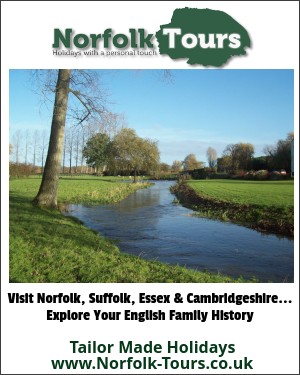COASTAL NORFOLK UK
Exploring England’s Norfolk and Suffolk Coastlines
By Glynn Burrows, Norfolk Tours
From the diverse bird, wildlife and nature viewing opportunities to historic sites, Glynn Burrows, owner of Norfolk Tours in England, shares the highlights of visiting and exploring the coastal areas of Norfolk and Suffolk in East Anglia, England, on Big Blend Radio.
In England, we are so lucky. None of us are very far from the sea. My friend Vicky, who lives in Leicester (pronounced Lester), is slap bang in the middle of England and yet, she is only a couple of hours from the beach. I am in a very fortunate place, in the centre of Norfolk and I have a choice of many beaches within 45 minutes from my home.
The coast of East Anglia has extremely diverse natural habitats, from marshlands, cliffs, rocks, pebbles, golden sands, mudflats and even some areas which are man-made harbours. Our wildlife reflects this and many of our reserves are some of the most popular places for avid birders and nature lovers to visit all year long. We have many very rare species and the area is a haven for migrating birds.
It isn’t just birds which find our coast attractive, whales have been spotted here too and we often have sperm whales beaching themselves when they get off course. A very popular sight in the winter, are the seals. We went to see the pups and they are amazing. We were wrapped up against the cold and yet, there they were, laying around on the sand and swimming around in the freezing cold! Thank God for blubber!
Nature is amazing but there are many other attractions around our coast. As the sea was always the most important way to transport goods and people, we have ancient sites all around us. From Bronze Age Forts, Roman Towns, Medieval Churches, Fishing Villages, Ports and many other important places to visit. To walk along a Roman road, standing in a Saxon graveyard or standing beside a Medieval ruin while looking out to sea has a great connection to the past and the present. One of the most amazing things, is to stand on a pebble beach, with the tide coming in. The noise of the water rolling the pebbles up and down the shore has to be heard to be believed.
A few years ago, an almost complete skeleton of a mammoth was discovered in the cliffs near Cromer. Very recently, the earliest preserved human footprints outside of Africa, were discovered in Happisburgh (pronounced Haysburra) and they were dated to between 850,000 and 950,000 years old. One can imagine that people have stood there, in awe of the strength of nature for thousands of years and that we, with all of our progress, are still at the mercy of the wind and water, does tend to put mankind in its place!
Glynn Burrows is the owner of Norfolk Tours in England. For help or advice about tracing your family history, or if you are thinking about taking a vacation to England visit www.Norfolk-Tours.co.uk





